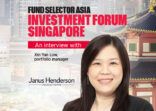“We work with people who want the ability to look at the quant side of things but do not have the time or resources to develop the right infrastructure or the right people,” said James Beaumont, head of portfolio research and consulting group at Natixis Global Asset Management.
In the region, the consulting team is working with institutional investors, financial advisers, private banks and family offices in Hong Kong and Singapore.
The team uses what it calls a “durable portfolio” goal that involves putting risk first. “If you manage risk, then the return is the by product rather than the other way around,” Beaumont said.
“Our aim is not to give investment advice, but to be a second pair of eyes.”
How it works
Typically, the adviser sends through portfolios with a history of 3, 5 and 10 years.
“The analysis is meant to be bespoke for them, so we speak about benchmarks, risk targets and what they are trying to get out of that portfolio.”
A group based in London then uses analytical tools to evaluate the portfolio, a 20-page report is prepared and the team talks the client through the findings.
“We don’t say you’ve got this wrong or right, we say, for example, `You’re carrying more risk in a medium portfolio than the benchmark, is that deliberate?’ We identify which bit of the portfolio is driving that risk and ask if that is what you want.
“The clients draw their own conclusions and may reweight some of the portfolio or add an asset class and come back to us.”
The relationship is ongoing and clients may come back in six months after they have adjusted their portfolio and ask for a rerun of the analysis, he said.
What is an Asian portfolio?
The team has only been in Asia since mid-year, so Beaumont provided what he cautioned were broad generalisations about regional portfolios.
Asian portfolios tend to have fewer positions, typically 10-12, than developed market portfolios, which have 15-20 or higher, he said. However, that doesn’t necessarily indicate concentrated portfolios because most are showing satisfactory levels of diversification.
In terms of asset classes, in equities Asian portfolios indicate investors are still looking at active managers to add value and although there is a home bias, they are increasingly taking more global exposure, Beaumont said.
On the fixed income side, portfolio construction is often outsourced to more strategic bond managers.
“People who have the possibility to move fixed income risk between duration, credit and country exposure. People aren’t going for fixed income buckets where they say, 10% to this, 5% to this. They give it to two-three experts and trust them to do active fixed income management.”
He said his team typically gets three portfolios from clients, mostly balanced and aggressive type. Occasionally they’ll get an income type portfolio.
“On income portfolios we tend to see less diversification, which is a common talking point worldwide. Clients have a demand for income, but the worry is that building a portfolio of income-producing assets can lead to homogenous risks. We tend to see higher correlations and less diversification.”
He said much time is spent on evaluating diversification.
“People might think they have diversification, but run a correlation analysis and they may have five positions in a portfolio taking the same asset class risk.”
An origin of risk
The idea for the consulting team emerged after 2008, when some Natixis clients had issues with portfolio construction and risk management. “Risk become the driving force behind a lot of portfolio investment decisions,” Beaumont said, and the firm built the team of ex-portfolio managers, analysts and quants.
Beaumont was previously a portfolio manager at fund of hedge funds and fund of long only at Standard Life for 15 years.
The consulting team serves 2000 clients in the US after starting there in 2011, he said. Last year it expanded to Europe and in Q2 this year, Asia.
He added that there is no sales angle to the free service and the consulting team aims to stay independent from Natixis’ asset management business, but the work the consulting team does helps to build client relationships with Natixis.
















